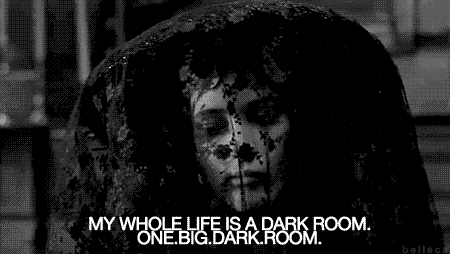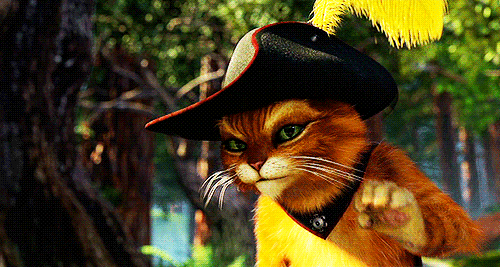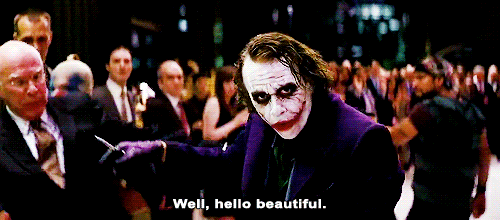What do you think?
Rate this book


126 pages, Paperback
First published May 24, 1979
His kiss, his kiss with tongue and teeth in it and a rasp of beard, had hinted to me, though with the same exquisite tact as this nightdress he’d given me, of the wedding night, which would be voluptuously deferred until we lay in his great ancestral bed in the sea-girt, pinnacled domain that lay, still, beyond the grasp of my imagination… that magic place, the fairy castle whose walls were made of foam, that legendary habitation in which he had been born.
He stripped me, gourmand that he was, as if he were stripping the leaves off an artichoke – but do not imagine much finesse about it; this artichoke was no particular treat for the diner nor was he yet in any greedy haste. He approached his familiar treat with a weary appetite.
Gambling is a sickness. My father said he loved me yet he staked his daughter on a hand of cards. He fanned them out; in the mirror, I saw wild hope light up his eyes. His collar was unfastened, his rumpled hair stood up on end, he had the anguish of a man in the last stages of debauchery.
Figaro here; Figaro, there, I tell you! Figaro upstairs, Figaro downstairs and – oh, my goodness me, this little Figaro can slip into my lady’s chamber smart as you like at any time whatsoever that he takes the fancy for, don’t you know, he’s a cat of the world, cosmopolitan, sophisticated; he can tell when a furry friend is the Missus’ best company.
"The lucidity, the clarity of the light that afternoon was sufficient to itself; perfect transparency must be impenetrable, these vertical bars of brass-coloured distillation of light coming down from sulphur-yellow interstices in a sky hunkered with grey clouds that bulge with more rain... The withered blackberries dangled like their own dour spooks on the discoloured brambles... Autumn... a haunting sense of the imminent cessation of being; the year, in turning, turns in on itself. Introspective weather, a sickroom hush."
"The woods enclose... The intimate perspectives of the wood changed endlessly around the interloper, the imaginary traveller walking towards an invented distance that perpetually receded before me."
"He strips me to my last nakedness... then dresses me again in an embrace so lucid and encompassing it might be made of water... his touch both consoles and devastates me."
"What big eyes you have" (LRRH, again) "Eyes of an incomparable luminosity, the numinous phosphorescence of the eyes of lycanthropes. The gelid green of your eyes fixes my reflective face. It is a preservative, like a green liquid amber... I am afraid I will be trapped in it... He winds me into the circle of his eye on a reel of birdsong... looking there makes me giddy, as if I might fall into it."
Hey there Little Red Riding Hood,
You sure are looking good.
You’re everything a big bad wolf could want.
Listen to me…
I don’t think little big girls should
Go walking in these spooky old woods alone.
—Sam the Sham and the Pharaohs, 1962
“She stands and moves within the invisible pentacle of her own virginity. She is an unbroken egg; she is a sealed vessel; she has inside her a magic space…she is a closed system; she does not know how to shiver. She has her knife and she is afraid of nothing.”Further, in Carter’s version, Red Riding Hood does not just protect herself, but controls the “game.” The seduction scene plays out like a modern slasher movie. As the girl—at the wolf’s bidding—removes each item of clothing and ostensibly becomes more and more vulnerable, we begin to see her as a victim. Just as we become lulled by the predictable script in motion, the girl, now completely naked, responds to the wolf’s threat, “All the better to eat you with,” by bursting into laughter: “[S:]he knew she was nobody’s meat.” Even given the background Carter provides in the story’s beginning, the scene startles. We knew the girl was strong, independent, and armed. However, the pattern of woman-alone-traveling-alone-helpless-alone-victim is so embedded in our consciousness that we are caught off-guard.
His touch both consoles and devastates me; I feel my heart pulse, then wither, naked as a stone on the roaring mattress while the lovely, moony night slides through the window to dapple the flanks of this innocent who makes cages to keep the sweet birds in. Eat me, drink me; thirsty, cankered, goblin-ridden, I go back and back to him to have his fingers strip the tattered skin away and clothe me in his dress of water, this garment that drenches me, its slithering odour, its capacity for drowning.

Every man must have one secret, even if only one, from his wife."



Do not think she had no will of her own; only, she was possessed by a sense of obligation to an unusual degree and, besides, she would gladly have gone to the ends of the earth for her father, whom she loved dearly.



It was a world in itself but a dead one, a burned-out planet. I saw The Beast bought solitude, not luxury, with his money.



So all cats have a politician's air; we smile and smile and so they think we're villains.


The woods enclose. You step between the first trees and then you are no longer in the open air; the wood swallows you up. There is no way through the wood any more, this wood has reverted to its original privacy. Once you are inside it, you must stay there until it lets you out again for there is no clue to guide you through in perfect safety.


So the girl picks a rose; pricks her finger on the thorn; bleeds; screams; falls.

Her voice is filled with distant sonorities, like reverberations in a cave: now you are the place of annihilation, now you e at the place of annihilation. And she is a cave full of echoes, she is a system of repetitions, she is a closed circuit.


It is a northern country; they have cold weather, they have cold hearts.

At night, the eyes of wolves shine like candle flames, yellowish, reddish, but that is because the pupils of their eyes flatten on darkness and catch the light from your lantern to flash it back to you--red for danger; if a wolf's eyes reflect only moonlight, then they gleam a cold and unnatural green, a mineral, a piercing colour. If a benighted traveller spies those luminous, terrible sequins stitched suddenly on the black thickets, then he knows he must run, if fear has not struck him stock-still


The damned Duke haunts the graveyard; he believes himself to be both less and more than a man, as if his obscene difference were a sign of grace. During the day, he sleeps. His mirror faithfully reflects his bed but never the meagre shape within the disordered covers.

"I remember how, that night, I lay awake in the wagon-lit in a tender, delicious ecstasy of excitement, my burning cheek pressed against the impeccable linen of the pillow and the pounding of my heart mimicking that of the great pistons ceaselessly thrusting the train that bore me through the night, away from Paris, away from girlhood, away from the white, enclosed quietude of my mother's apartment, into the unguessable country of marriage...I felt a pang of loss as if, when he put the gold band on my finger, I had, in some way, ceased to be her child in becoming his wife.
"Then I realised, with a shock of surprise, how it must have been my innocence that captivated him - the silent music, he said, of my unknowingness...”
"I saw him watching me in the gilded mirrors with the assessing eye of a connoisseur inspecting horseflesh, or even of a housewife in the market, inspecting cuts on the slab. I'd never seen, or else had never acknowledged, that regard of his before, the sheer carnal avarice of it...I sensed in myself a potentiality for corruption that took my breath away...The next day we were married.”
"...we should have a formal disrobing of the bride, a ritual from the brothel. Sheltered as my life had been, how could I have failed, even in the world of prim bohemia in which I lived, to have heard hints of his world?”
"He stripped me, gourmand that he was, as if he were stripping the leaves of an artichoke...”
"The lilies I always associate with him; that are white. And stain you.”
"I longed for him. And he disgusted me... Did all that castle hold enough riches to recompense me for the company of the libertine with whom I must share it?"
"I thought all these were old wives' tales, chattering of fools, spooks to scare bad children into good behaviour.”